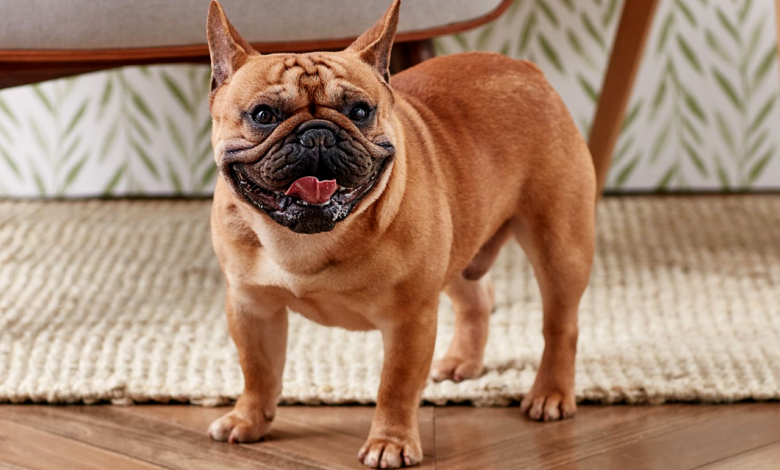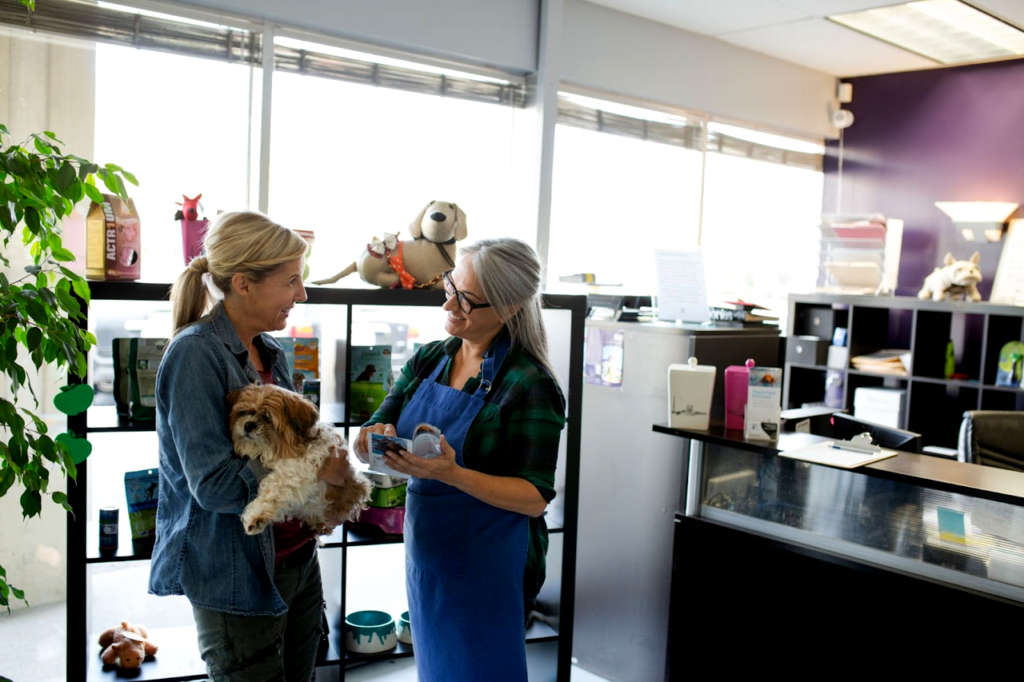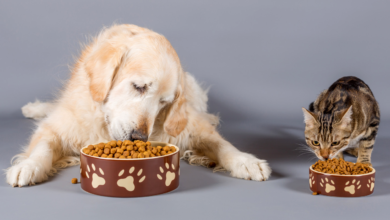
Why Is My Dog Panting So Much?
As a dedicated dog owner, witnessing your furry companion panting is not uncommon. However, when the panting becomes excessive, it can raise concerns and prompt questions about your dog’s well-being. In this comprehensive guide, we’ll explore the reasons behind why your dog might be panting so much and offer insights into effectively addressing this issue.
Read More: The Best Dry Dog Foods 2024
Reasons for Excessive Dog Panting

Heat and Dehydration
Dogs don’t sweat like humans; instead, they regulate their body temperature through panting. In warm weather or after strenuous activity, dog panting is normal. However, excessive heat or dehydration can intensify panting, signaling the need for immediate attention.
Anxiety and Stress
Dogs, like us, can experience anxiety and stress. Factors such as unfamiliar environments, loud noises, or separation anxiety may trigger excessive dog panting. Recognizing and addressing the underlying causes is essential for your dog’s mental well-being.
Health Issues
Excessive dog panting can be a symptom of various health problems, including respiratory issues, heart conditions, or infections. Identifying and addressing these issues promptly is crucial for ensuring your dog’s overall health.
Medications
Certain medications may have dog panting as a side effect. It’s essential to be aware of any changes in your dog’s behavior after starting a new medication and consult your veterinarian if necessary.
Recognizing Normal Panting
After Exercise
It’s entirely normal for dogs to pant after physical activity. Understanding your dog’s exercise limits can help distinguish between typical post-exercise panting and potential health issues.
In Warm Weather
Dogs dissipate heat by panting, especially in hot weather. Recognizing the difference between normal heat-related panting and excessive panting is vital for proactive care.
During Excitement
Excitement and anticipation can lead to increased panting. Recognizing when dog panting is tied to positive stimuli helps in understanding your dog’s emotional cues.
Identifying Excessive Panting
Rapid Breathing Patterns
Excessive panting often involves rapid and shallow breathing. Monitoring your dog’s breathing patterns can aid in the early detection of potential problems.
Persistent Panting
Prolonged dog panting that persists beyond normal circumstances may indicate an underlying issue. Regularly observe your dog to notice any unusual patterns.
Changes in Behavior
Accompanying changes in behavior, such as lethargy or restlessness, may be signs that the panting is a symptom of an underlying problem.
Addressing Heat-Related Dog Panting
Providing Shade and Water
Ensure your dog has access to shaded areas and an ample supply of fresh water, especially in warm weather. This simple step can significantly help in regulating their body temperature.
Avoiding Excessive Exercise in Heat
Limit vigorous exercise during hot days to prevent overheating. Opt for walks during cooler parts of the day and be mindful of your dog’s energy levels.
Cool-Down Techniques
Implement cooling methods, like wetting your dog’s paws or using a damp cloth, to help lower their body temperature. This can be particularly effective after outdoor activities.
Managing Anxiety-Induced Dog Panting

Creating a Calm Environment
Establish a safe and calm space for your dog, minimizing potential stressors. This could be a designated area in your home where they feel secure.
Behavioral Training
Positive reinforcement and consistent training can help reduce anxiety-induced dog panting over time. Consult with a professional dog trainer for tailored strategies.
Consultation with a Veterinarian
If anxiety persists, consult with a veterinarian to explore potential interventions or medications. A professional opinion can guide you in addressing your dog’s specific needs.
Tackling Health-Related Panting
Common Health Issues Causing Panting
Understand common health problems associated with excessive dog panting and seek veterinary advice for proper diagnosis and treatment. Respiratory issues, heart conditions, and infections are among the potential culprits.
Regular Veterinary Check-Ups
Schedule routine check-ups to detect and address health issues early, preventing them from escalating. Your veterinarian can provide guidance on maintaining your dog’s optimal health.
Appropriate Treatment Plans
Follow your veterinarian’s recommended treatment plans diligently to ensure your dog receives the necessary care. This may include medications, lifestyle adjustments, or dietary changes.
Evaluating Medication-Induced Panting
Understanding Side Effects
Be aware of potential side effects of medications and report any concerns to your veterinarian promptly. Open communication is crucial for addressing and mitigating medication-induced dog panting.
Consulting the Veterinarian
If you suspect medication-induced dog panting, consult your veterinarian to discuss potential adjustments or alternative medications. Your vet can guide you in finding the right balance for your dog’s health.
Adjusting Medication When Necessary
In collaboration with your veterinarian, make necessary adjustments to medications to manage dog panting effectively. It’s essential to strike a balance between addressing the underlying issue and minimizing side effects.
Preventive Measures
Regular Exercise
Maintain a consistent exercise routine to keep your dog healthy and mentally stimulated. This not only supports physical health but also contributes to their overall well-being.
Proper Hydration
Ensure your dog stays adequately hydrated, especially during warm weather or after physical activity. Access to clean water is crucial for preventing dehydration-related panting.
Addressing Anxiety Early
Proactively address anxiety triggers to prevent excessive panting and promote overall well-being. This may involve creating a routine, providing comforting toys, or seeking professional guidance.
Routine Veterinary Check-Ups
Regular vet visits are essential for preventive care, allowing early detection and management of potential health issues. Stay informed about your dog’s health status through routine examinations.
The Importance of Observation

Knowing Your Dog’s Baseline
Understanding your dog’s normal behavior and baseline panting levels enables quicker identification of abnormalities. Regular observation helps you spot changes early on.
Monitoring Changes in Behavior
Stay vigilant for changes in behavior, as they can signal underlying health or emotional issues. Behavioral changes often accompany excessive dog panting, providing valuable clues for intervention.
Seeking Professional Advice
If in doubt, consult your veterinarian for professional advice tailored to your dog’s specific needs. Veterinarians are trained to assess and address a variety of health concerns, providing peace of mind for concerned pet owners.
Read More: 15 Life-Changing Products for Dogs in 2024
The Final Words
While dog panting is a natural and necessary behavior in dogs, excessive panting requires careful attention. By understanding the reasons behind your dog’s panting and taking proactive measures, you can ensure their well-being and happiness. Remember, every dog is unique, so tailoring your approach to their individual needs is key to a healthy and happy furry friend.







